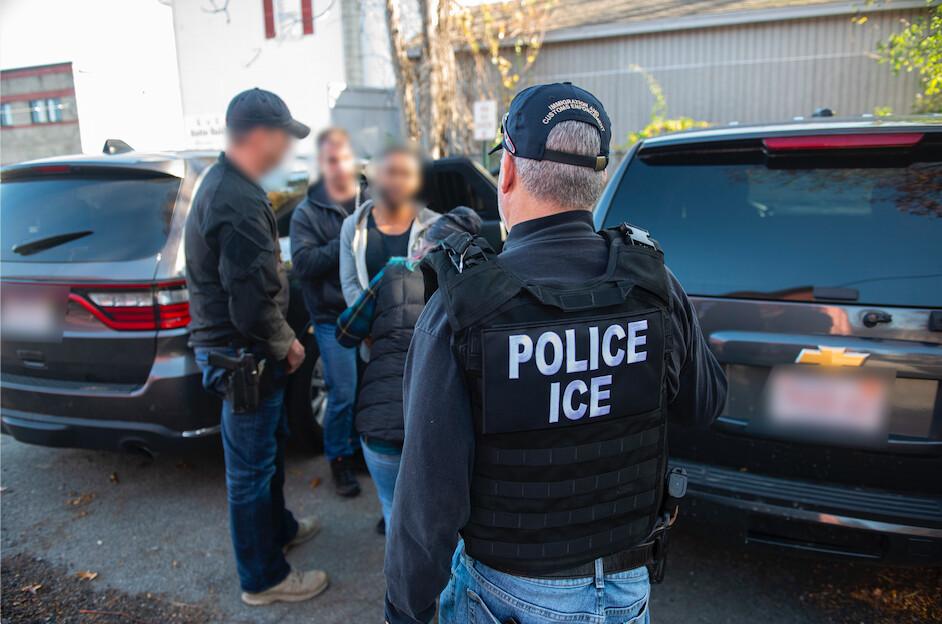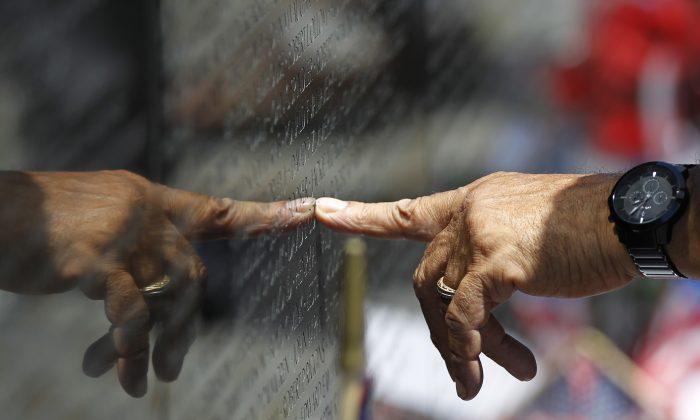As the snow and icy rain began to fall on that early winter morning in New York, New Jersey, and Rhode Island, something big was going down.
They didn’t know it, but Jan. 20, 2011, was the beginning of the end for the Mafia.
On that day, the largest law enforcement operation against America’s most infamous crime organization commenced. Hundreds of FBI agents, equipped with criminal warrants, began arresting mob suspects across three states.
This operation was different from the many others that had been launched in the past. Authorities were going for not just the heart of the Mafia—the crime family bosses—but also individuals further down the hierarchy.
By the end of the day, ‘made men’ like Luigi Manocchio, the former boss of the New England Mafia; Andrew Russo, the street boss of New York’s Colombo family; and his acting underboss, Benjamin Castellazzo were in custody.
More than 125 individuals were arrested and charged with felonies including murder, extortion, and loan sharking.
The FBI’s dragnet even captured several labor union officials suspected of collaborating with the Mafia.
Still reeling from the 2011 operation, the Mafia was hit again on March 12, 2015, when FBI agents arrested 10 members of the New Jersey-based DeCavalcante crime family on charges of murder and prostitution.
In 2025, the seven traditional crime families known as La Cosa Nostra—meaning “This thing of ours”—are a shadow of their former selves.
While the Mafia was mostly a homegrown threat, there is now a much larger danger facing the United States.
Kristen Setera, spokesperson for the FBI’s Boston field office, said that the organized crime landscape has changed significantly since the late 20th century.
Back then, crime was often organized around hierarchical “families” that operated within neighborhoods, cities, and states.
Now, the United States is dealing with the rise of international criminal enterprises that possess multi-billion-dollar war chests and have a global reach.
Outside of the Mexican drug cartels are the Venezuelan gang Tren de Aragua and the Salvadoran MS-13 gang.
“We must do more than try to mitigate the enormous harms these groups cause in America,” the DOJ said in a statement.
“It is not enough to stem the tide of deadly poisons, such as fentanyl, that these groups distribute in our homeland.”

A Bull in the FBI’s Shop
Salvatore Sammy “The Bull” Gravano has been deeply entrenched in the inner circles of the Mafia machine and has survived.The former underboss of New York’s Gambino family sounds almost sentimental as he says, “The Mafia is nothing like it used to be—that’s for sure. They’ve boiled down to nothing. It’s not the same.”
If his nostalgia is honest then it’s also ironic, considering he assisted the FBI in bringing down Gambino family leader, John Gotti.
In 1991, Gravano—nicknamed “The Bull” after someone remarked that he fought like a bull in street fights—agreed to testify against Gotti, who was known as “Dapper Don” for his stylish appearance and “Teflon Don” for his remarkable ability to avoid criminal charges.
For his cooperation, Gravano, now 80 years old, served one year of a five-year sentence in federal prison after admitting to his involvement in 19 murders that implicated Gotti, who died in prison on June 10, 2002, from laryngeal cancer.
Gravano also confessed to participating in the 1985 unsanctioned killing of Paul Castellano, the former head of the Gambino family, before Gotti came to power.
Gravano entered the federal Witness Protection Program in Colorado but left in 1995 and relocated to Arizona.

How It All Came Apart
Gravano believes that advancements in surveillance technology, a concerted decades-long effort by the FBI, DEA, and other law enforcement agencies, and use of the Racketeer Influenced and Corrupt Organizations (RICO) Act ultimately brought down the organization.“They had teams on every family. All five [New York] families had a special team—14 to 16 agents working on each family. And … they busted everybody,” said Gravano.
The federal RICO Act of 1970 was aimed at combating organized crime by enabling its victims to seek recovery through civil lawsuits.
RICO imposes a criminal penalty of 20 years in prison for convictions showing a pattern of racketeering by the accused.
“It allowed for prosecution of organized crime in a way that had never been done before,” said Mafia expert Geoff Schumacher, vice president of exhibits and programs at The Mob Museum in Las Vegas.
“You did not have to prove that the boss of the family had actually pulled the trigger in a murder. He was involved in it because of his association. The burden of proof is reduced significantly.”

Bigger Fish to Fry
Setera would not confirm if the FBI Boston field office had gone so far as to disband its organized crime squad and reassign its agents.
Today’s Gangs
Gravano stresses that there are intrinsic differences between the Mafia and gangs such as MS-13 and Tren de Aragua–most notably, in the use of violence.“My captain always told me, ‘We can use violence, but as a last resort. In other words, you get into an argument, you gotta chill. Otherwise, you’re an animal,’” Gravano said.
“These gangs are so [expletive] dangerous. They’ll rob a kid’s bike, kill the kid for the bike. You don’t see Mafia guys doing that,” he said.
“These people are completely different.”
Unlike modern crime syndicates, traditional organized crime families adhered to a specific code of conduct, Gravano said.
Gravano said the sanctioned killing of a Mafia member is a serious and complicated matter; it requires planning and the approval of the family boss. Breaking the code often meant a death sentence.
He sees a big difference between the Mafia and the Mexican cartels.

“They don’t have a code of honor. The Mafia did have a code of honor,” he said. “There’s a lot of us who broke the code of honor a number of times—I mean, I broke it myself. I took it out on a boss—killed a boss—Paul Castellano.
Gravano said of the cartel and gang members: “These are people, like, if a guy cooperates [with law enforcement], they want to kill the wife, the kids—the rest” of their family.
“We don’t kill kids. We don’t kill women. I mean, it happens once in a blue moon, but for practical purposes, we don’t do anything like that.”
“MS-13 is organized by subsets known as ‘cliques,’ and each clique typically has one or more leaders, commonly referred to as ’shot callers,'” the Justice Department stated.
Of those arrested with MS-13 affiliations, at least 92 percent were illegal immigrants and 16 percent of the individuals had illegally entered the United States at least twice.
Down but Not Out
While La Cosa Nostra may no longer have the cunning clout it once did, the FBI reports that it continues to pose a “significant threat” in the New York metropolitan area, New England, Philadelphia, Chicago, and Detroit.Times have changed, Gravano said.
Once, the Mafia had control over the labor unions through which it gained access to lucrative construction projects in the cities.
The Sheriff and the Mobster
After Gravano spent 18 months in the government’s witness protection program in Colorado, he moved to Arizona and became involved in the illegal trafficking of recreational narcotics in the late 1990s.In June 2001, he pleaded guilty in Maricopa County, Arizona, to state charges for the distribution of the street drug ecstasy. His sentence included 19 years in prison and a $100,000 fine. He was released in 2017 and remains on supervised parole for the rest of his life.
Joe Arpaio, 92, served as a federal narcotics agent for 32 years before becoming the head of the DEA’s Arizona field office.
In 1993, he was elected as the sheriff of Maricopa County and became known for his tough stance on crime and unconventional punishment methods.
He reinstituted chain gangs, required inmates to wear pink underwear, and had them live in a tent city and eat bologna sandwiches. These moves earned Arpaio the moniker, “America’s Toughest Sheriff.”
Gravano and Arpaio’s paths eventually crossed at a Trump support rally during the 2024 election.
They also met twice after the election to discuss the realities of organized crime and the prison conditions that Gravano experienced in Maricopa County while Arpaio was the sheriff.

As a former narcotics agent, Arpaio believes that the Mafia’s involvement in illicit drug trafficking—cocaine, heroin, and marijuana—was their “worst mistake,” one that brought the full weight of the DEA and FBI upon them.
“That brought everybody down on them,” he said.
Over the years, Arpaio has developed a perspective about the mob compared to their violent foreign counterparts.
“The mob had their regulations, which were you didn’t kill kids. And you didn’t kill cops,” Arpaio told The Epoch Times. “The so-called Mafia [foreign gangs and cartels] today kill kids; they’re vicious, and they kill cops. So there’s a big difference.”
Schumacher said it’s a misconception that crime families shunned narcotics trafficking before the emergence of Mexican drug cartels.
“You go back to the Prohibition era, and the Mafia was involved in drug trafficking,” he said.
“There’s this myth that the Mafia wouldn’t touch drugs—that the bosses didn’t want anyone involved in selling drugs. While sometimes they would say that publicly, they were actively engaged in drug trafficking,” Schumacher said.
“Today, I suspect the Mexican cartels have kind of a stranglehold on that.”

Will the Mafia Ever Return?
Arpaio said that the term “Mafia” will endure even after the crime families have disappeared.“The name of the Mafia isn’t disappearing,” Arpaio said. “You’ve got crime stories and all this having to do with the mob, the old mob. There’s only one Mafia.”
Schumacher said that the five New York families—Bonanno, Columbo, Gambino, Genovese, and Luchese—are still active.
They continue their involvement in illegal bookmaking, loan sharking, tax fraud, and stock market fraud, with a greater emphasis on white-collar crime.
“There’s not much killing anymore—not much of that kind of stuff,” Schumacher said. “It’s more in finding illegal ways to make money.”
“There are still remnants of the Mafia in New York, New Jersey, Philadelphia, Chicago, and Detroit. But it is fading fast.”

‘Misplaced Fascination’
Even as traditional organized crime is waning, the public’s fascination persists, Schumacher said.“We should never look at it as glamorous,” he cautioned. “There was almost nothing positive about it. It sold a lot of newspapers. I can say that.”
“One of the reasons for nostalgia is that some of the mob bosses had charisma, personality, fueled by tabloid journalism and Hollywood.
“We created this monster, if you will. There’s nothing wrong with studying history, learning it, being interested in it, as long as we maintain our perspective.”
Gravano now focuses on his podcast ‘Our Thing with Sammy The Bull’ and his YouTube channel called ‘Salvatore Sammy The Bull Gravano’.
He has chosen to live his life openly and share his story, and recognizes the risks that come with this decision.
“I like the road, dealing with people—legitimate people.”
In September 2024, he formally became a born-again Christian. He wears a solid gold and diamond pinky ring to signify his past life in the mob.
“I changed when I left the life,” Gravano said.
“I don’t miss the life. But when I think about it, everything I’ve done—the good, the bad, the ugly—has made me what I am today.”







